 March 14, 2019 John E. Ross, KD8IDJ, Editor
| ||||||||||||||||||
FCC Invites Comments on ARRL Technician Enhancement Proposal The FCC has invited public comments on ARRL's 2018 Petition for Rule Making, now designated as RM-11828, which asks the FCC to expand HF privileges for Technician licensees to include limited phone privileges on 75, 40, and 15 meters, plus RTTY and digital mode privileges on 80, 40, 15, and 10 meters. Interested parties have 30 days to comment. The Technician enhancement proposals stemmed from the recommendations of the ARRL Board of Directors' Entry-Level License Committee, which explored various initiatives and gauged member opinions in 2016 and 2017.
Specifically, ARRL proposes to provide present and future Technician licensees:
Under the ARRL plan, the maximum HF power level for Technician operators would remain at 200 W PEP. ARRL's petition points to the need for compelling incentives not only to become a radio amateur in the first place, but then to upgrade and further develop skills. ARRL stressed in its petition the urgency of making the license more attractive to newcomers, in part to improve upon science, technology, engineering, and mathematics (STEM) education. The ARRL Board's ad hoc Entry-Level License Committee, which recommended the proposals, received significant input from ARRL members via more than 8,000 survey responses. Now numbering some 384,500 licensees, Technicians comprise more than half of the US Amateur Radio population. ARRL stressed in its petition the urgency of making the license more attractive to newcomers, in part to improve upon science, technology, engineering, and mathematics (STEM) education, "that inescapably accompanies a healthy, growing Amateur Radio Service." ARRL said its proposal is critical to develop improved operating skills, increasing emergency preparedness participation, improving technical self-training, and boosting overall growth in the Amateur Service, which has remained nearly inert at about 1% per year. Read more. Amateur Radio Volunteers Activate Following California Flooding Amateur Radio volunteers with the Sonoma County, California, Auxiliary Communications Service (ACS) rallied to assist the Sonoma County Fire and Emergency Services Department in February after heavy rain led to flooding in the region. San Francisco Section Manager Bill Hillendahl, KH6GJV, told ARRL that while no actual communication emergencies occurred during the weather event, Sonoma County ACS volunteers provided "needed eyes" and were available in case further assistance was needed. Sonoma County ACS Radio Officer Dan Ethen, WA6CRB, said heavy rainfall on fire-scarred areas resulted in flooding along the Russian River.
"All-Hazard Road Patrols observed and reported downed power lines and trees, mud[slides] and landslides impacting traffic flow, and debris issues that posed problems with water drainage and road flooding," Ethen said. From February 26 - 28, ACS Volunteers staffed the Sonoma County Operational Area Emergency Operations Center (EOC) and the Graton Fire Incident Command Post (ICP). They provided back-up communication capability between the EOC and ICP to support the evacuation of residents in the Russian River flood area. ACS volunteers continued All-Hazard Road Patrols while operating on the county-wide 2-meter repeater system. "Mobile patrol units were also tracked on APRS and visible to the EOC radio operators to ensure safety and accurate location reporting of any observed hazards," Ethen said. "ACS volunteers remain ready to serve their communities," Ethen said. Read more. Build Your Own Space Weather Dashboard NOAA's Space Weather Prediction Center (SWPC) has started adding a variety of space weather data in the open-standard JavaScript A free amCharts license is available in exchange for including a product mention. Jan van den Berg, PA2P, suggests combining NOAA's data with amCharts. Other providers of free charts include Google Charts and Chart.js. Van den Berg offers more information and examples on his website. Contact him for additional information. The Doctor Will See You Now! "SWR Simplified" is the topic of the new (March 14) episode of the "ARRL The Doctor is In" podcast. Listen...and learn!
Every 2 weeks, your host, QST Editor-in-Chief Steve Ford, WB8IMY, and the Doctor himself, Joel Hallas, W1ZR, will discuss a broad range of technical topics. You can also email your questions to doctor@arrl.org, and the Doctor may answer them in a future podcast. Enjoy "ARRL The Doctor is In" on Apple iTunes, or by using your iPhone or iPad podcast app (just search for "ARRL The Doctor is In"). You can also listen online at Blubrry, or at Stitcher (free registration required, or browse the site as a guest) and through the free Stitcher app for iOS, Kindle, or Android devices. If you've never listened to a podcast before, download our beginner's guide. New Book, Energy Choices for the Radio Amateur, Now Shipping Revolutionary changes are taking place in the way we produce and consume power for our homes, transportation, and the technology that we use every day. A new book, Energy Choices for the Radio Amateur by Bob Bruninga, WB4APR, who developed the Automatic Packet Reporting System (APRS), explores ongoing changes in the world of power and energy and takes a careful look at the choices we can Featuring full-color photos and illustrations, Energy Choices for the Radio Amateur details Bruninga's experiences with new energy sources. It is intended to help other radio amateurs and DIY hobbyists to prepare for the inevitable major energy decisions they will face -- choices that can contribute to a reduction in fossil-fuel use and save money in the long run. The concepts presented in this 320-page volume not only satisfy everyday power requirements, but also can help prepare for emergency and backup power at home and in the field. Bruninga's life-long interest in energy technology and Amateur Radio has led him to embrace home solar, electric vehicles, heat pumps, and other advances that have greatly reduced his family's dependence on fossil fuels. Energy Choices for the Radio Amateur is available from the ARRL Store or your ARRL dealer. (ARRL Item no. 1038, ISBN: 978-1-62595-103-8, $34.95 retail, special ARRL Member Price $29.95). Call 860-594-0355 or, toll-free in the US, 888-277-5289. It will also be available as an ebook for the Amazon Kindle. More Mentors Needed for New ARRL Emergency Communications Course Sessions High interest in the recently announced updated ARRL Introduction to Emergency Communications (EC-001) course is prompting a call for additional class mentors to help meet the demand, which ARRL Lifelong Learning Manager Kris Bickell, K1BIC, says "exceeded our projections." As Bickell explains, the course is designed to be interactive, with volunteer mentors guiding each session.
EC-001 mentors should be ARRL members and active, experienced Amateur Radio licensees of General class or higher, and at least 18 years old. Mentors should have experience in public service communication and in Amateur Radio Emergency Service (ARES) activities and come with the recommendation of their Section Managers. In addition to the EC-001 course, prospective mentors should have completed ICS 100, 200, 700, and 800; the FEMA Professional Development Series, and National Weather Service SKYWARN® training. Professional experience in emergency response or communication and as a trainer or educator is desirable, with interest or experience in distance learning. Candidates should possess sufficient computer skills and be able to interact with other course students and with other mentors online. Apply online to become an ARRL mentor. For more information, contact ARRL Emergency Preparedness Assistant Ken Bailey, K1FUG, (860) 594-0227. Read more. How to Clean Up after a Battery Leak Many hams have had the unfortunate experience of old batteries leaking in a piece of gear or a flashlight, creating a mess. Business technology news site ZDNet recently offered its procedure for cleaning it up. The brief online presentation recommends taking some precautions about coming in contact with the white discharge -- specifically potassium hydroxide in the case of alkaline cells, a caustic irritant. An old toothbrush or something similar can start t The article advises against using any sort of acid such as vinegar or lemon juice, lest it cause corrosion problems of its own. It suggests a fiberglass scratch brush for scrubbing the battery compartment contacts clean, although other tools may work as well. Deoxit D5 or similar contact cleaner also comes in handy, with a tiny dab of dielectric grease or silicone paste as a finishing touch to inhibit future corrosion if a leak occurs. Other tips to head off problems down the road include using only name-brand batteries, avoiding mixing old and new batteries, removing batteries from devices not in use, avoiding exposing batteries to extreme heat or cold, and minding battery expiration dates. ARRL Announces 2019 Teachers Institutes on Wireless Technology Sessions As part of its educational outreach through the Education & Technology Program (ETP), ARRL will offer three sessions of the Teachers Institute on Wireless Technology in July. These week-long workshops will be held at ARRL Headquarters in Newington, Connecticut, and hosted by the Dayton Amateur Radio Association (DARA) in Dayton, Ohio. The Teachers Institute (TI) is an expenses-paid professional development seminar that provides teachers at all grade levels with tools and strategies to introduce The Teachers Institute curriculum is designed for motivated teachers and other school staff who want to learn more about wireless technology and take that knowledge back to their classrooms. The goal of the TI program is to equip educators with necessary fundamental knowledge and -- through hands-on learning -- generate the inspiration for teachers to continue exploring wireless technology, and adapt what they learn to their classroom curricula. Basic (TI-1) and advanced (TI-2) classes are offered. Applicants to the advanced TI-2 workshop are required to have completed TI-1 and be licensed Amateur Radio operators. Interested educators can apply online. The $100 enrollment fee is refunded for applicants who are not selected. Qualified applicants must be active teachers at an elementary, middle, or high school, or community college/university, or in a leadership/enrichment instruction role in an after-school program. Summer 2019 Teachers Institute Schedule
Topics covered in the TI-1 "Introduction to Wireless Technology" workshop include basic electronics, radio science, microcontroller programming, and basic robotics. In addition, TI-1 attendees will learn about Amateur Radio, take part in a hidden transmitter hunt, see demonstrations of Amateur Radio satellite communication, and build and program simple robots. The TI-2 "Remote Sensing and Data Gathering" workshop will concentrate on analog-to-digital conversion and data sampling. Participants will receive telemetry from Amateur Radio satellites and apply it to math and science topics. The grant to attend a TI covers transportation, hotel, and a modest per diem allowance to cover meals, instructional resources, and a resource library of relevant ARRL publications. For more information, contact ARRL Lifelong Learning Manager Kris Bickell, K1BIC, at ARRL Headquarters. Read more. The K7RA Solar Update Tad Cook, K7RA, Seattle, reports: Sunspots reemerged for 8 days, March 5 - 12. The average daily sunspot number rose from 4.4 to 9.9 this reporting week, March 7 - 13. Average daily solar flux barely changed from 70.6 to 70.9. The average planetary A index declined from 12.6 to 5.1, and the average middle latitude A index dropped from 9.7 to 3.9.
Predicted solar flux (March 12 forecast) is 70 on March 14 - 15; 68 on March 16 - 19; 69 on March 20 - 28; 70 on March 29; 71 on March 30 - April 8; 70 on April 9; 69 on April 10 - 24; 70 on April 25, and 71 on April 26. No forecast was posted on March 13, due to some issues at the USAF. The predicted planetary A index (March 12 forecast) is 8, 12, and 8 on March 14 - 16; 5 on March 17 - 19; 10 on March 20; 5 on March 21 - 25; 12, 30, 28, 14, and 8 on March 26 - 30; 5 on March 31 - April 1; 8 on April 2 - 3; 5 on April 4 - 9; 12, 10, and 8 on April 10 - 12; 5 on April 13 - 15; 10 on April 16; 5 on April 17 - 21, and 10, 26, 24, 12, and 8 on April 22 - 26. Sunspot numbers for March 7 - 13 were 14, 11, 11, 11, 11, 11, and 0, with a mean of 9.9. The 10.7-centimeter flux was 70.9, 71.8, 70.7, 71.1, 70.4, 70.7, and 70.8, with a mean of 70.9. Estimated planetary A indices were 8, 5, 5, 4, 3, 7, and 4, with a mean of 5.1. The middle latitude A index was 5, 3, 4, 3, 3, 5, and 4, with a mean of 3.9. A comprehensive K7RA Solar Update is posted Fridays on the ARRL website. For more information concerning radio propagation, visit the ARRL Technical Information Service, read "What the Numbers Mean...," and check out K9LA's Propagation Page. A propagation bulletin archive is available. Monthly charts offer propagation projections between the US and a dozen DX locations. Share your reports and observations. Just Ahead in Radiosport
See the ARRL Contest Calendar for more information. For in-depth reporting on Amateur Radio contesting, subscribe to The ARRL Contest Update via your ARRL member profile email preferences. Bart Jahnke, W9JJ, Appointed as New ARRL Radiosport and Field Services Manager Bart Jahnke, W9JJ, has been appointed as ARRL Radiosport and Field Services Manager. Jahnke, who has served as ARRL Contest Branch Manager for the past 3 years, succeeds Norm Fusaro, W3IZ, who was recently promoted to Director of Operations at ARRL Headquarters.
With respect to radiosport, Jahnke pointed out that contesting activity not only defends Amateur Radio allocations, but builds a pool of operators and expands their skills in providing communication in times of emergency or disaster. Jahnke said contesters, DXers, traffic handlers, and everyday users of the amateur bands know what to expect in terms of propagation at different times of day and year, and can apply that knowledge in establishing disaster communication. As Radiosport and Field Services Manager, Jahnke will oversee the Radiosport and Field Services staff in managing awards, contests, and Logbook of The World (LoTW), as well as issues involving the ARRL Field Organization on Section, club, and current volunteer monitoring and emergency services issues. Before returning to ARRL Headquarters in 2016, Jahnke was in the private sector for about a decade. Jahnke first joined the ARRL Headquarters staff in 1985, starting as editor of the ARRL Repeater Directory and as a Membership Services Representative, handling matters related to FCC rules. For the next 3 years, he also assisted with ARRL Award processing (except DXCC) and later trained incoming Awards Managers. In 1989, he became the manager of the ARRL Volunteer Examining (VEC) Program, a position he held for 16 years. Read more. Hamvention Announces 2019 Award Winners The Hamvention® Awards committee has announced the recipients the four Hamvention 2019 awards -- Amateur of the Year, Club of the Year, Technical Achievement, and Special Achievement. Named Amateur of the Year was Nathaniel Frissell, W2NAF, who founded and spearheads Ham Radio Science Citizen Investigation (HamSCI), which joins professional researchers and the Amateur Radio community for
mutual benefit. Frissell may best be known for his involvement in the 2017 Solar Eclipse QSO Party (SEQP) to study eclipse ionospheric effects. The Nashua Area Radio Society (NARS) is Hamvention 2019's Club of the Year. The ARRL Special Service club in southern New Hampshire focuses on mentoring and youth outreach to bring newcomers into the hobby and help them to get on the air. The club offers Technician, General, and Amateur Extra licensing classes twice yearly and has helped more 210 individuals earn a license or to upgrade. Piero Begali, I2RTF, is the 2019 recipient of Hamvention's Technical Achievement Award. Begali is best known for designing and producing high-quality precision Morse code straight keys and iambic paddles. He authored History and Stories of Radio in 2005. The book includes not only radio history descriptions of radio technology, but his personal experiences as well. Chris Janssen, DL1MGB/KO2WW, is the winner of Hamvention's 2019 Special Achievement Award. Janssen served as president of World Radiosport Team Championship (WRTC) 2018, guiding more than 300 volunteers who put on the successful competition in Germany. Read more. "Tyro" License Proposal Open for Comment The same day that the FCC put ARRL's Technician Enhancement petition on public notice, it also invited comments on another proposal, designated RM-11829, asking the FCC to create a "Tyro" license class that would require a minimal online examination and require mentoring by an Amateur Radio licensee of Technician class or higher. A "tyro" is a novice or a beginner. The petition was filed in August of 2017 by Gary A. Hampton, AD0WU, of Longmont, Colorado. Tyro licensees would earn operating privileges on 99 channels in a 70-centimeter "TyroSubBand." Applicants would have to be at least 11 years old. Hampton said in his petition that one goal would be "reliable, nationwide 70-centimeter interoperability" in the exclusive 430 - 440 MHz segment of the band.
Hampton maintained in his petition that Amateur Radio also "should be used to further scientific research that is published and quickly placed in the public domain." Hampton expressed the belief that institution of the Tyro license would spawn growth within Amateur Radio, making entry into the hobby nearly as simple as obtaining a General Mobile Radio Service (GMRS) license. The window for comments on the Tyro license petition is open for 30 days. GQRP Club Founder the Rev. George Dobbs, G3RJV, SK The founder of the GQRP Club and Amateur Radio author the Rev. George Dobbs, G3RJV, of Littleborough, England, died on March 11. He was 75. Dobbs was reported to have been in ill health for some time and had been living in a care facility, where his condition Dobbs was the honorary secretary of the GQRP Club (G5LOW), which he founded in 1974 to cater to those interested in low-power Amateur Radio communication. He served as the editor for the club's quarterly, SPRAT. Dobbs was the author of QRP Basics, The International QRP Collection (co-authored with Steve Telenius-Lowe, 9M6DXX), and Making a Transistor Radio. Dobbs was a frequent Hamvention® attendee, and in 2015, he received the Hamvention "Technical Excellence Award." -- Thanks to Lee Boulineau, KX4TT Upcoming ARRL Section, State, and Division Conventions
Find conventions and hamfests in your area. See the ARRL Contest Calendar for more information. For in-depth reporting on Amateur Radio contesting, subscribe to The ARRL Contest Update via your ARRL member profile email preferences.
. .
Subscribe to...
Free of charge to ARRL members...
| ||||||||||||||||||
 "This action will enhance the available license operating privileges in what has become the principal entry-level license class in the Amateur Service," ARRL said in its Petition. "It will attract more newcomers to Amateur Radio, it will result in increased retention of licensees who hold Technician Class licenses, and it will provide an improved incentive for entry-level licensees to increase technical self-training and pursue higher license class achievement and development of communications skills."
"This action will enhance the available license operating privileges in what has become the principal entry-level license class in the Amateur Service," ARRL said in its Petition. "It will attract more newcomers to Amateur Radio, it will result in increased retention of licensees who hold Technician Class licenses, and it will provide an improved incentive for entry-level licensees to increase technical self-training and pursue higher license class achievement and development of communications skills.".jpg) Ethen reported, "On February 13 and 14, ACS volunteers staffed the Sonoma County Operational Area Emergency Operation Center. Mobile ACS Field Units were assigned to patrol the burn-scar areas that were a result of the Complex Fire Storm in October of 2017."
Ethen reported, "On February 13 and 14, ACS volunteers staffed the Sonoma County Operational Area Emergency Operation Center. Mobile ACS Field Units were assigned to patrol the burn-scar areas that were a result of the Complex Fire Storm in October of 2017."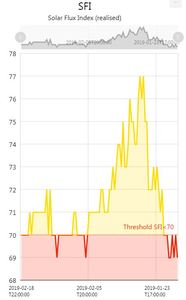
 Sponsored by
Sponsored by 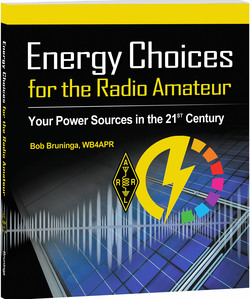 make; the pros and cons of utility versus home solar power, oil and gas heat versus an electric heat pump, and a gas car versus a hybrid or electric vehicle.
make; the pros and cons of utility versus home solar power, oil and gas heat versus an electric heat pump, and a gas car versus a hybrid or electric vehicle.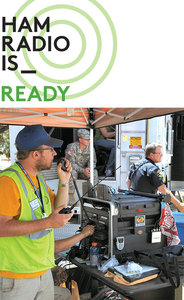 "We appreciate the work of the mentors to make EC-001 an interactive experience for the participants. The real-world emergency communications experience they bring to the course is very important to the learning process," Bickell said. "We look forward to bringing in more mentors to help ARRL expand the reach of this valuable emergency communications training." Bickell has developed a waiting list for prospective EC-001 students, who will be notified as additional sessions are scheduled.
"We appreciate the work of the mentors to make EC-001 an interactive experience for the participants. The real-world emergency communications experience they bring to the course is very important to the learning process," Bickell said. "We look forward to bringing in more mentors to help ARRL expand the reach of this valuable emergency communications training." Bickell has developed a waiting list for prospective EC-001 students, who will be notified as additional sessions are scheduled..jpg) he project, along with a small scraper, and cotton swabs dipped in water. Start by removing and properly disposing of the bad cells and then brushing out the worst of the material -- preferably outdoors or over a container to catch the remnants.
he project, along with a small scraper, and cotton swabs dipped in water. Start by removing and properly disposing of the bad cells and then brushing out the worst of the material -- preferably outdoors or over a container to catch the remnants.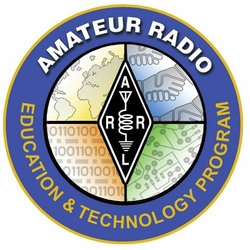 wireless technology elements into their classrooms, from basic electronics and robotics to space technology. The application deadline is May 1.
wireless technology elements into their classrooms, from basic electronics and robotics to space technology. The application deadline is May 1.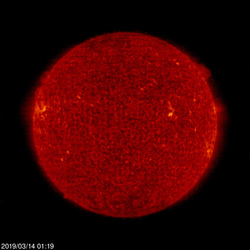 The vernal equinox occurs on March 20, when the Southern and Northern hemispheres will be bathed in equal amounts of solar radiation.
The vernal equinox occurs on March 20, when the Southern and Northern hemispheres will be bathed in equal amounts of solar radiation.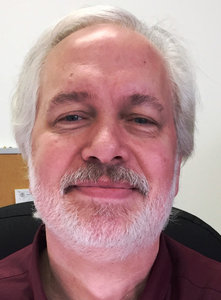 "This new role now offers me the exciting opportunity not only to be on the front lines of our radiosport community, but our international/DX and domestic radiosport operating and awards activities," Jahnke said. "Having worked closely with tens of thousands of our Volunteer Examiners in my prior Headquarters tour, I'm able to re-engage with many of them now in our Field Services program."
"This new role now offers me the exciting opportunity not only to be on the front lines of our radiosport community, but our international/DX and domestic radiosport operating and awards activities," Jahnke said. "Having worked closely with tens of thousands of our Volunteer Examiners in my prior Headquarters tour, I'm able to re-engage with many of them now in our Field Services program."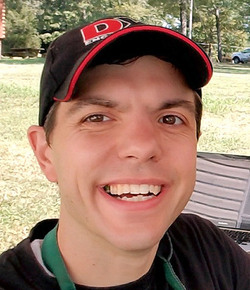
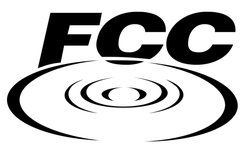 "The Tyro license is exceptionally important to FEMA's CERT program," Hampton's petition asserts. "It allows ARES to solve CERT's communication problems. The TyroSubBand technical specifications easily double the capacity of typical 70-centimeter repeaters..."
"The Tyro license is exceptionally important to FEMA's CERT program," Hampton's petition asserts. "It allows ARES to solve CERT's communication problems. The TyroSubBand technical specifications easily double the capacity of typical 70-centimeter repeaters..."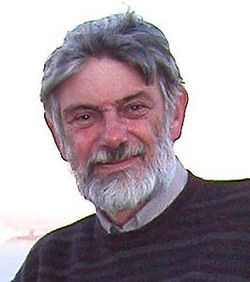 recently deteriorated.
recently deteriorated.







